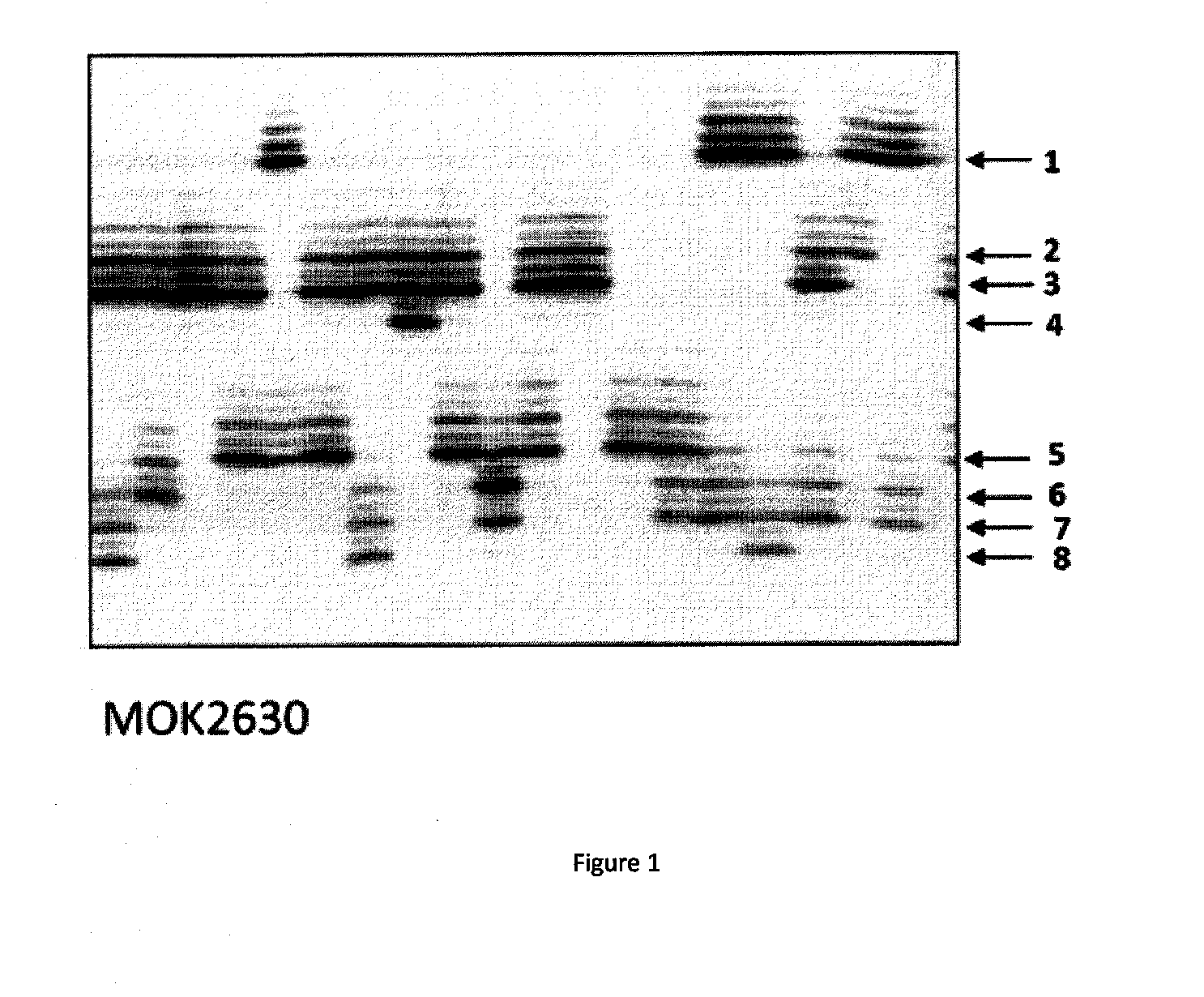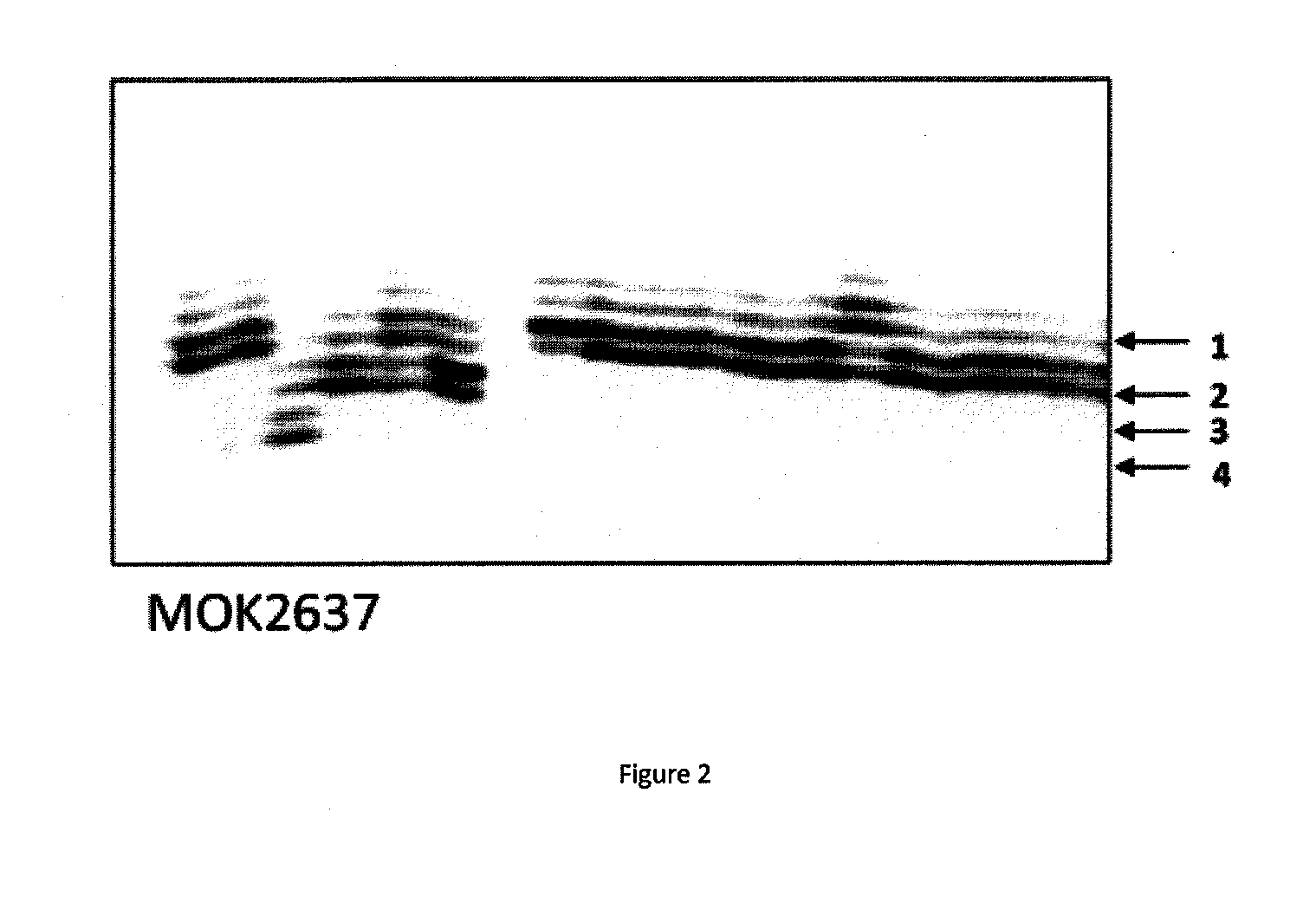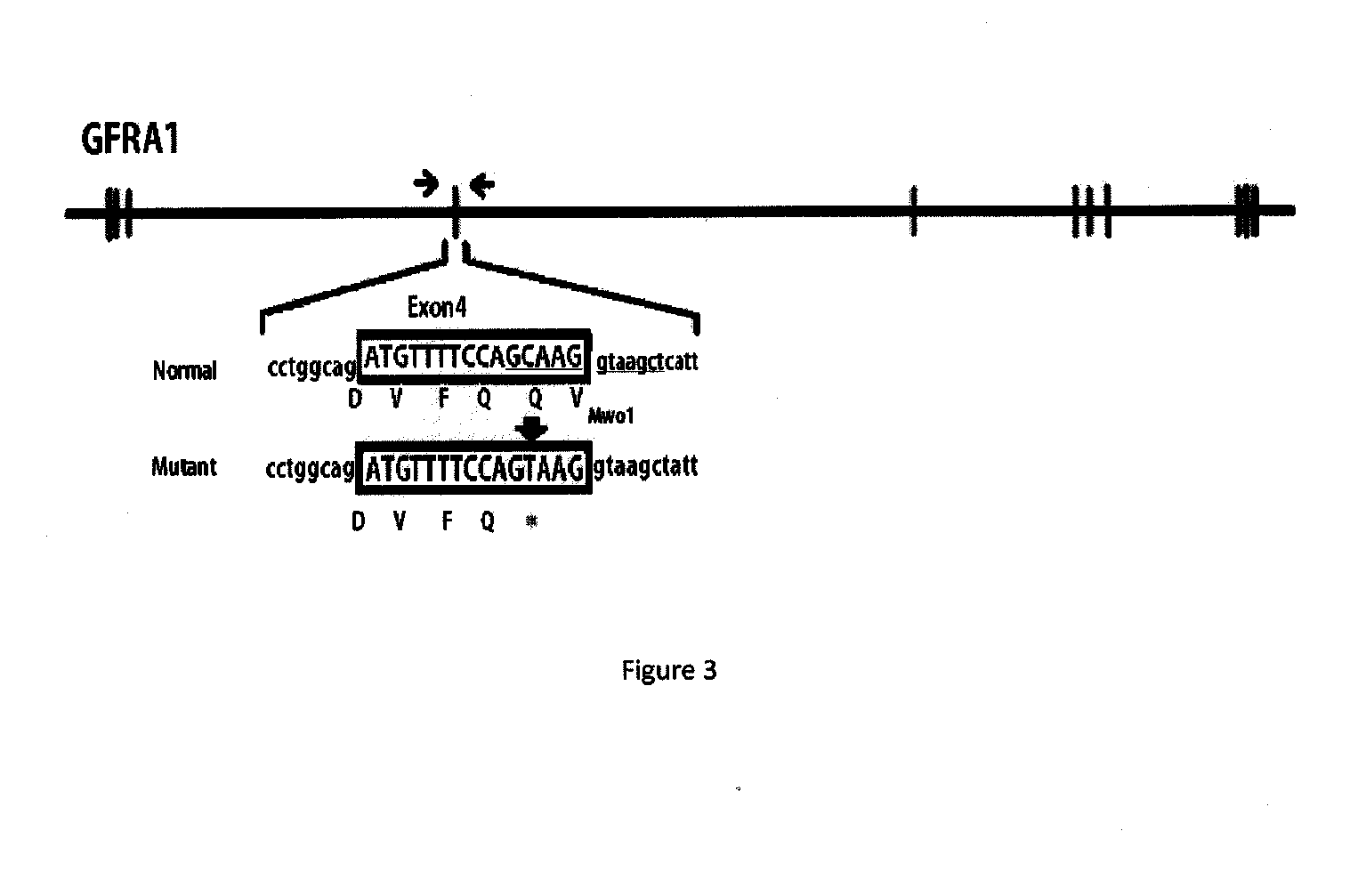Marker for diagnosing forelimb-girdle muscular anomaly in mammal individual, and detection method using same
a technology of forelimb girdle and diagnostic mark, which is applied in the field of diagnostic mark forelimb girdle muscular anomaly in mammals, can solve the problems of large economic loss to breeders and the inability to prevent the occurrence of the disorder
- Summary
- Abstract
- Description
- Claims
- Application Information
AI Technical Summary
Benefits of technology
Problems solved by technology
Method used
Image
Examples
example 1
[0076]This Example shows that the presence or absence of a loss-of-function mutation in a bovine GFRA1 gene can be detected by RFLP to diagnose an animal as affected by forelimb-girdle muscular anomaly or as a carrier of the disorder.
[0077]DNAs were obtained, by phenol / chloroform extraction, from semen, blood, or muscle tissue of 26 animals of Japanese black cattle with symptoms of forelimb-girdle muscular anomaly, 37 normal animals of Japanese black cattle, 6 carriers of forelimb-girdle muscular anomaly of Japanese black cattle (a sire of affected and normal animals, 3 dams, a grand sire, and a great-grand sire). The carriers were determined based on the fact that their offspring had developed symptoms of the disorder. For these animals, a 345-bp region including exon 4 of the GFRA1 gene was amplified by PCR using the following pair of primers.
(SEQ ID NO. 12)GFRA1-F2:ATGCTCCTCACGGTACCTCTGTCCTAAA(SEQ ID NO. 13)GFRA1-R3:GTTCCCTTCCAGAGCTCAAGC
[0078]The PCR products were digested with t...
example 2
[0082]This Example shows that it is possible to diagnose an animal as affected by forelimb-girdle muscular anomaly or as a carrier of the disorder according to the presence or absence of a loss-of-function mutation in a GFRA1 gene.
[0083]DNAs were isolated, by phenol / chloroform extraction, from semen, blood, or muscle tissue of 26 animals of Japanese black cattle with symptoms of forelimb-girdle muscular anomaly, 37 normal animals of Japanese black cattle, 6 carriers of forelimb-girdle muscular anomaly of Japanese black cattle (a sire of affected and normal calves, 3 dams, a grand sire, and a great-grand sire). For the isolated DNAs, a 345-bp region including exon 4 of the bovine GFRA1 gene was amplified by PCR using the pair of primers in Example 1 (SEQ ID NOs. 12 and 13). The carriers were determined based on the fact that their offspring had developed symptoms of the disorder.
[0084]All 26 animals with symptoms of forelimb-girdle muscular anomaly showed homozygosity for T at nucleo...
example 3
[0088]This Example shows that affection by and carriage of forelimb-girdle muscular anomaly can be diagnosed by genotyping MOK2630, MOK2637, SNP B, and SNP D.
[0089]DNAs were obtained by phenol / chloroform extraction from semen, blood, or muscle tissue of 26 animals of Japanese black cattle with symptoms of forelimb-girdle muscular anomaly. The DNA fragments containing MOK2630, MOK2637, SNP B, and SNP D were amplified PCR using the pair of primers shown in Table 1. To determine the genotypes of SNP B and SNP D, the fragments were cleaved with restriction enzymes MseI (SNP B) and BamAI (SNP D).
[0090]For the genotypes of MOK2630, MOK2637, and SNP D, all 26 animals were homozygous for the disease type, i.e., 8, 3, and G (Table 1). For the genotype of SNP B, 25 animals were of the disease type, i.e., homozygotes for G (Table 1) but 1 animal was a heterozygote of the disease type (G) and the normal type (T) (Table 2).
TABLE 2number ofnumber ofhomo-number ofhomo-zygotes ofhetero-zygotes ofdi...
PUM
 Login to View More
Login to View More Abstract
Description
Claims
Application Information
 Login to View More
Login to View More - R&D
- Intellectual Property
- Life Sciences
- Materials
- Tech Scout
- Unparalleled Data Quality
- Higher Quality Content
- 60% Fewer Hallucinations
Browse by: Latest US Patents, China's latest patents, Technical Efficacy Thesaurus, Application Domain, Technology Topic, Popular Technical Reports.
© 2025 PatSnap. All rights reserved.Legal|Privacy policy|Modern Slavery Act Transparency Statement|Sitemap|About US| Contact US: help@patsnap.com



